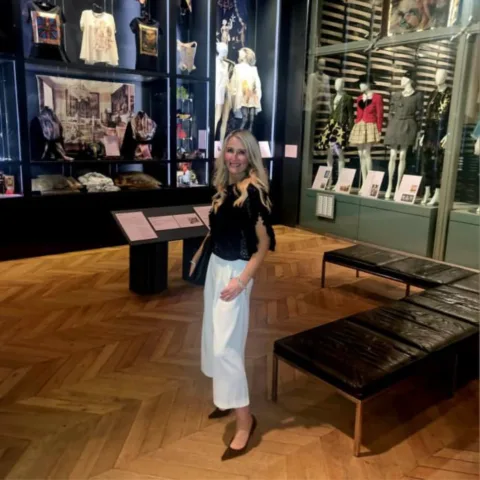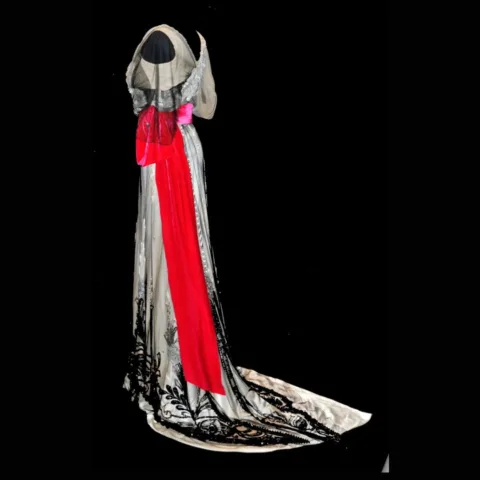The Bowes Museum Blog

Stop That Plasticiser! Learning How to Preserve Modern Materials at West Dean College
Since starting my textile conservation training I had heard much about West Dean College, where courses in art, craft, conservation and music all happily cohabit against the idyllic back drop of Edward James’ Sussex estate. Despite the dispersal of much of James’ collection on his death in 1984, the house remains a treasure trove of artistic delights on every landing and the estate endures as an educational trust dedicated to the arts.

West Dean College, near Chichester

West Dean College interior, with Dali’s Mae West lips sofa
We arrived on mass from The Bowes Museum, one textile conservator and two textile conservation interns, to attend the Conservation of Plastics course, led by conservation scientist Yvonne Shashoua, Senior Researcher at the National Museum of Denmark and author of Conservation of Plastics: Material Science, Degradation and Preservation. Plastics are now a regular feature of twentieth century museum textile collections and The Bowes Museum is no exception with bags, buttons and shoes enough to worry even the most modern-material-savvy conservator. The relatively short life-span of plastics makes them cause for great concern and, knowing that plastics in collections would be a challenge that I would come up against time and again in my career, I applied to The Clothworkers’ Foundation for course funding which was generously approved.
The course was thorough, covering history of production, properties, and methods of destructive and non-destructive identification. The results of plastic degradation can be rather alarming to come across. It was a relief to learn that the number of problem plastics are limited to the early, semi-synthetics (cellulose nitrate and cellulose acetate), rubber, polyurethane and PVC – all of which we are now well equipped to spot.
Each type of plastic is affected to a different degree by UV light, temperature, humidity, and the presence of oxygen. Once a plastic has been identified, it can be stored using appropriate methods and materials, to slow the rate of deterioration. Preventive conservation is paramount, once degradation has begun, its effects can be irreversible, and ultimately destructive.

Carrying out the Beilstein test to detect PVC.
Conservation practice in plastic objects is not as developed as other conservation specialisms, such as textiles for instance, which have been developed over several decades. While established treatment options remain limited, it was also encouraging to learn that there are a number of tried and tested ways to improve the condition and appearance of degrading plastic objects.
Additives and plasticisers can migrate to the surface, appearing as a white bloom. They can be removed to make the object more visibly appealing, although it is important to be aware that original material is being removed. It is also possible to use heat to re-shape plastics that were once flexible but are now hard and brittle (such as PVC and rubber). Adhesive treatments are sometimes necessary, but not all of the adhesives that we tested were reversible, which is an important consideration in conservation.

Testing different adhesives on a range of plastics
Practical sessions punctuated the theory, and we had an opportunity to bring some non-accessioned items from The Bowes Museum for identification and assessment. We all agreed that the polyurethane wedges were deteriorated beyond the point of no return, but there was certainly hope for the amazing block coloured 1970s platforms which can be cleaned.

1970s shoes with polyurethane wedge

1970s shoe with white bloom on surface
The course at West Dean presented the issues with plastics in collections that conservators are beginning to be confronted with. The collecting policy for The Bowes Museum collection currently ends with the 1970s. As more plastics enter the collection, as items of costume, accessories, and as part of contemporary textiles, potential problems have to be at the forefront of conservator’s minds. Some plastics can become unrecognisable within a couple of years, but if an object can be identified early enough, and stored appropriately, its lifetime can be extended. There is no time to waste.
Jamie Robinson, ICON/HLF Textiles Conservation Intern
![]()







